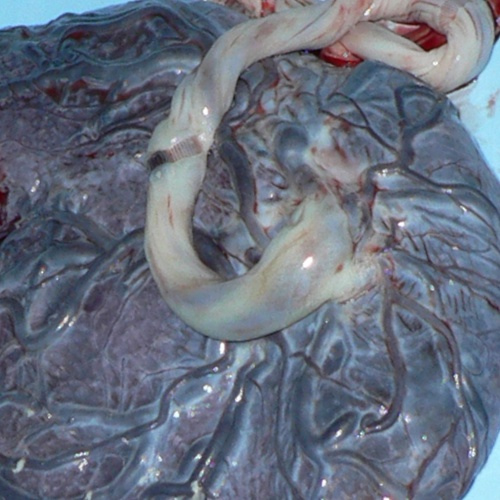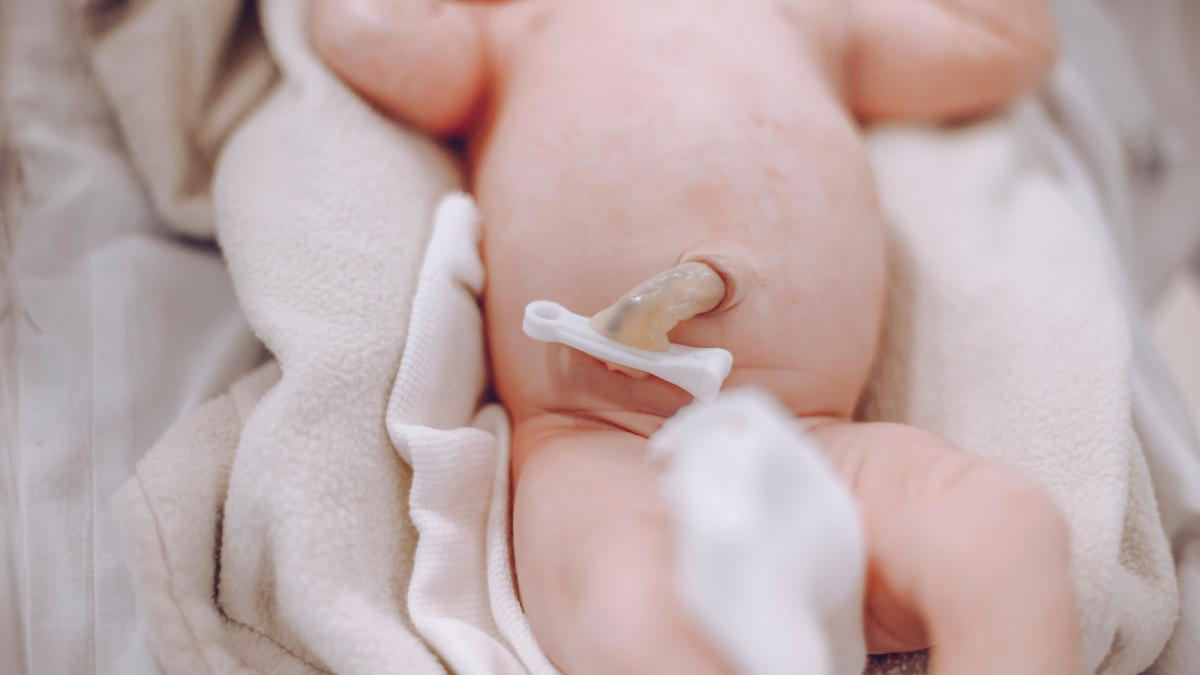Placenta- The Third Stage of Labor

The Third Stage of Labor:
One would think that making the difficult decisions are done after the birth of the baby, but there is still so much to consider!
The placenta is a disposable organ that forms during the pregnancy. This important organ, connecting mom and baby, provides the baby with the nutrients it needs to develop and prosper. It also gets rid of the baby's' wastes. Protective immunity passes from mom to baby through the placenta, but diseases can too.
FUN FACT- The placenta is the only transient or temporary organ in the body.
Separation from the Baby
After the birth of the baby, the placenta will need to be delivered. In the majority of cases, an infusion or intramuscular injection of oxytocin (pitocin) will be given to moms after the birth of the baby. This will promote the separation of the placenta from the uterine wall and keep maternal bleeding to a minimum. This process is called active management and is common practice in many locations across the country.
Separating the baby from the placenta is another topic worth consideration. It is common practice among obstetricians to immediately clamp and cut the umbilical cord upon birth of the baby, a practice less common with midwives. Some families decide to wait for the umbilical cord to stop pulsating before it is cut. Conflicting opinions as to whether delayed cord clamping is beneficial exists. Some studies show that delayed cord clamping may cause babies to have polycythemia, or elevated red blood cells, resulting in jaundice. More studies indicate that delaying cord clamping by about 2 minutes can help to prevent anemia and bleeding in the brain for term newborns. There is no definitive right or wrong choice here so discuss this with your practitioner and decide on a mutually agreeable and appropriate plan of action for your delivery.
* Keep in mind that if the umbilical cord is wrapped around the baby's neck at delivery, it may need to be cut immediately for the safety of the newborn. Also, if the baby is born and does not cry or respond to the stimulation attempts made by the healthcare team, it may not be plausible to delay cord clamping for 2 minutes while the baby is not breathing.
Even fewer families opt for a Lotus birth. With a Lotus birth, no intervention is taken to separate the baby from the placenta. Instead, the two remain attached until nature takes its course and the placenta and umbilical cord rot and separate from the baby.
- Lotus Birth: Benefits, Risks, What to Expect, and More
Lotus birth is a birthing method where the placenta and umbilical cord are left attached to the baby until they naturally fall off, usually within 3 to 10 days after delivery. We discuss the benefits, risks, and considerations. - Delayed Umbilical Cord Clamping: Health Risks And Benefits
Waiting just a few minutes to clamp the umbilical cord after a baby is born could boost iron stores in the newborn's blood, but delayed cord clamping comes with an increased risk of jaundice, acco - Delayed Cord Clamping
Cord Blood Banking/ Donating
After the umbilical cord is cut, blood remains in the cord and the placenta. This is called cord blood, and it contains stem cells. The stem cells in cord blood are similar to the stem cells obtained from a bone marrow aspiration, and can be used to treat more than 50 disease including leukemia, sickle cell disease, and other genetic or neurological ailments. Studies are continuously being performed to find other uses for cord blood stem cells. In some states there are free, public cord blood donation programs. Private donation is also an option. Most pregnant women will receive literature from the more popular cord blood collection and storage agencies. The major differences between cord blood donation and private cord blood banking include the following:
- Cord blood banking can be expensive, with a one time initiation fee anywhere from $500-$2,500 followed by an annual fee as long as you continue to bank the cord blood. Privately banking cord blood reserves it for use at your discretion.
- Cord blood donating is free. Donated cord blood goes into a public bank, like bone marrow, and is distributed on a need base, first come first serve basis.
Shop around since banking can be pricey, but if you or a family member have a condition known to improve with the infusion of cord blood, banking might be right for you. If not, consider donating your baby's cord blood and potentially saving someone else.
Cord blood collection and banking does not interfere with your ability to take the placenta home. Immediate cord clamping and cutting will result in you having a larger banked sample, but it is sometimes possible to delay cord clamping and get enough of a sample. It is not possible to collect or donate cord blood if a Lotus birth is planned. If desired, once the cord blood is collected, the placenta can be returned to you barring any complications making it necessary for the hospital to collect and run tests on the placenta. Some of these complications will be discussed below.
- Donating Umbilical Cord Blood
Pregnant women should consider donating their baby's umbilical cord blood. Your questions about how and why to donate cord blood are answered in this hub.
Disposition of the Placenta
Once the placenta is delivered, what do you plan on doing with it? If you have no particular plans for the placenta it will typically be disposed of by the hospital by incinerated. But, there are numerous options regarding the disposition of the placenta to take into consideration. Women in some cultures bury their placenta's. In other cultures it is common practice to consume the placenta. Yet other cultures believe that the placenta has medicinal properties and use it in creams, powders, capsules, and teas. Many birthing centers will allow families to take the placenta home if requested. What you do with your placenta once home... that is totally up to you. Placenta art is another thing that has been catching on.
In some circumstances the doctor may request that the placenta be examined in detail and be sent to pathology. This may happen if certain risk factors are present at birth. Some of these circumstances that might necessitate the need for placental examination could include:
- Maternal a fever during labor. This indicates the possibility of infection. Pathology can identify the bacteria that is causing the infections and help ensure proper treatment for both mom and baby.
- Gestational Diabetes
- Gestational Hypertension
- Known Placental Anomalies
- Fetal Birth Defects
- Concerning Fetal Heart Rate Tracing
- Multiple Gestation
Theses are some of the reasons your placenta might need to be retained by the hospital and further evaluated. If this is the case, it is probably not possible to take your placenta home.
Who would have guessed that the topic of the placenta alone could require so much consideration and decision making. Hopefully some of your questions have been answered, or your eyes have been opened to ideas or possibilities that you had not known existed. Best wishes!
Suggested Reading
- Birth: The Top 10 Things They Don't Tell You
Top 10 thing they don't tell you about childbirth. - Early Labor: The Secret to Speeding up Progress
Early labor is the time it takes for the cervix to reach 3-4 centimeters. Signs of early labor include: irregular contractions, 5 or more minutes apart, lasting 30-90 seconds, lower back pain, and pelvic pressure. This article discusses the most effe - Pain Relief Options During Labor
Most women will experience child birth in her lifetime. Labor is know to be quite painful, but fortunately there are numerous pain relief options available today. An extensive list of both alternative/non-medication options and pharmaceutical options - Top 10 Things to Avoid During Labor (Suggestions for Both Mothers and Fathers to Be)
This Hub gives moms and dads some ideas about what to avoid during Labor and Delivery, as well as alternative suggestions to consider.








